-
Posts
3,039 -
Joined
-
Last visited
Content Type
Profiles
Blogs
Forums
American Weather
Media Demo
Store
Gallery
Posts posted by high risk
-
-
9 minutes ago, MillvilleWx said:
Still in testing. It runs several hrs after the NBM 4.3, so that will bump up with the next run, don’t worry. It also is biased low on these kinds of setups. This is what the testing is for! We have lots of comparison analysis and notes for developers that will be sorted out after the winter season.
Not fully true. While the time it starts doesn't match the operational, the actual cycles of the parallel use inputs from the same model cycles as the ops. Worth noting that the ops does not include any Canadian inputs in the winter suite, while the parallel uses several. And a reminder for everyone: both the ops and para winter products only update at 01/07/13/19z.
-
 3
3
-
 4
4
-
-
5 minutes ago, mitchnick said:
As for the AIGFS, look what's shown up over the Dakotas this run that nothing at 12z and didn't exist at 6z. Our little friend again.
It's not "new" per se; it's just faster on both the GFS and AIGFS.
-
 4
4
-
-
52 minutes ago, CAPE said:
Latest Natty blend- I think it has ingested the 12z model runs..
Nope. The winter stuff updates at 01/07/13/19z.
-
27 minutes ago, MN Transplant said:
At least until we get convergence on the individual members. This is still a substantial spread on the GFS. Still ~8 of 20 members that are duds for most of us.
First, remember that the GEFS is now 31 members. I think there were dissemination limitations that prevent all members from being sent to various servers, but the 20 displayed in that image are only a subset.
That said, there are certainly a bunch of GEFS members that are duds, but my guess is that those are the ones that keep the cutoff stuck in the far Southwest. Certainly limited support for that idea outside of the GFS/GEFS camp.
-
 6
6
-
 2
2
-
-
Doesn't really change the final result, the ECAIFS is notably slower with the arrival of the event on Saturday.
-
 2
2
-
-
Just now, Terpeast said:
Aifs also late. Dissemination issues it looks like
Yeah, it's not the biggest deal that this forum attributes late-arriving graphics on a downstream website to "the model is running late", but it ain't a bus stuck in traffic. These models run at the exact same time each day, and it takes close to the same amount of time each cycle for them to run. > 99% of delays are dissemination issues or issues at the sites generating graphics. The model itself is only late if it crashes or there are huge computer issues, both are which are exceedingly rare.
-
 4
4
-
 4
4
-
-
-
3 hours ago, bncho said:
@high risk my MVP wil likely be able to provide the answer
So, the question was whether the AI systems retain info cycle to cycle. They're independent cycles.
One word of caution for everyone who is excited to see so many hits in the AI ensembles: the AI ensembles are very underdispersive on the whole, and this will be an area of research going forward. I would therefore advise caution when they show high probabilities of an event, as they can show high confidence in the wrong outcome.
-
 13
13
-
 4
4
-
 1
1
-
 1
1
-
 1
1
-
-
FWIW, the AIGFS and ECAIFS runs this morning have some remarkable similarities in the Eastern U.S. for next Sunday, with a high-impact winter storm, even impacting our area. These two AI systems have been bouncing around a lot, so appropriate caution is warranted, but them both agreeing today catches my eye.
-
 18
18
-
-
4 minutes ago, Stormchaserchuck1 said:
Don't look now, but the 15z Hrr has moderate snow over the Baltimore area later today. Another 0.5" here
A round of snow later this afternoon for those east of DC is definitely not off the table. Even runs late Saturday showed a second round later Sunday afternoon - they just disagreed on how far west it would come. And there still isn't a ton of agreement on that......
-
 3
3
-
-
One thing to watch for later today: The NAM and RGEM end the event by mid or late morning for everyone west of the Bay, while the GFS and some HRRR cycles have precip ending by late morning but then bring another round of snow for DC and points east later in the afternoon.
-
 5
5
-
-
7 minutes ago, TowsonWeather said:
Prior to this you were not aware that ensembles were dramatically more valuable than OP runs 8-10 days out?
Bruh.
WAY too many posters in this thread - many of whom SHOULD know better - acting shocked and despairing about variable OP outcomes over a week away. Come on, folks.
Seriously. I'm baffled by he expectation that we should lock in a solution at 240 hours and have every consecutive deterministic cycle not waiver in the slightest.
-
 3
3
-
-
15 minutes ago, mitchnick said:
That's not far off the deck at all. Higher elevations in Howard, Carroll and Baltimore counties should be able to overcome it...hopefully.
Northern Maryland won't get as warm in the low levels, so verbatim from the 18Z NAM, they're ok for snow. But areas south of I-70 have ugly soundings:
That's rain for sure, and it occurs at a time when precip rates are really good. The 18Z HRRR looks the same. We have to hope that this is incorrect, and given the lack of run-to-run consistency, that isn't necessarily just wishful thinking.
-
 1
1
-
 1
1
-
-
3 minutes ago, WxUSAF said:
Euro and euroai for tomorrow?
About 1-1.5" for the Howard County crew with more along the Bay and a decent bit more for the Eastern Shore.
-
 6
6
-
 1
1
-
-
The recent AIGFS cycles have more of the longer-range consistency (and overall favorable pattern look) that y'all are craving.
-
 6
6
-
-
3 minutes ago, bncho said:
I would say that this idea that the models are worse than they are is largely stemmed from the fact that we've been in a more volatile Nina base state for the last 5+ years.
I agree. Any pattern that generally prevents "clean" southern stream waves is going to have limited predictability in the medium range.
-
 3
3
-
-
12 minutes ago, Eskimo Joe said:
Interesting - is the Euro always late for NBM?
Yes, especially for the Euro ensembles which arrive so much later than the GEFS and GEPS.
-
 1
1
-
 1
1
-
-
I know that there is a lot of frustration in this thread, and I completely get it, but the "the models suck way more than they used to crowd" (and it's only a few people) really needs to go take a deep breath. Attached are two 500mb GFS forecasts for the same valid time, made 12 hours apart. On the hemispheric scale, they're pretty freaking similar. Unfortunately, there are some minor differences with the handling of the eastern trough, at least partially driven the trailing wave over the upper Midwest. And UGH - those differences are enough to change the track of the east coast low by about 150 miles, and the resulting impact on the band of significant weather is the difference between us having 4" of snow or a partly cloudy day.
We all want these perfect fat and wet southern stream systems that we can easily track for days with minimal stress, but the reality is that northern stream systems are dicey as hell. They're small, and they're initialized in data sparse regions. I looked at the two features that will drive the Sunday "event", and the lead wave yesterday broke off of a vortex in central Canada, and I could barely trace the trailing wave back to the polar regions. The small changes in the handling of those features unfortunately cause major changes in the outcome for us. And it should be noted while not every modeling system has shown a good event here Sunday with that trough, they have all bounced around a lot with those two waves and the resulting impact on east coast low formation and associated precip stripe. That speaks to the incredible challenges of complicated northern stream evolution. There is where ensembles help a lot, but we really need to move away from using means (at least inside of Day 5) and focus more on exceedance probabilities, because a handful of snowy solutions among a large number of dry ones can really influence the mean value.
Let's hope that we get buried before Valentine's Day so that any further complicated Miller Bs don't cause the chaos in this forum that this one has.
-
 22
22
-
 1
1
-
 1
1
-
 3
3
-
-
8 hours ago, WxUSAF said:
Magic. I think it heavily weights meso models? @high risk? So maybe the SREFs pummel us?
The deterministic NBM snow product does indeed weight the meso models more, but that's too far out to include them. Even the SREF wasn't in range. I looked at the forecast in question, and the amount of forecasted snow was only around 1.5", but it was largely driven by some very snowy GEFS members. Of note, the winter products in the NBM update at 01, 07, 13, and 19Z. The 19Z products will include the 12Z GFS but NOT the 12Z ECMWF (which hasn't yet arrived by the time that the NBM winter suite is run).
-
 2
2
-
 2
2
-
-
46 minutes ago, WxUSAF said:
Let’s use this for all these chances of snow between now and Saturday. My mental summary:
16th: maybe rain ends as brief snow?
17th: GFS has a dusting for metro corridor?
18th: GGEM/RGEM and Ukie have shovelable snow, mostly for Maryland
Are these dates off by 1?
-
1 hour ago, WxUSAF said:
Does any snow actually occur with temps at or below freezing? Seems like rain turning to white rain and quickly ending.
Temps just above freezing, but it's night, so maybe stickage on a few surfaces? That said, the CAM suite consensus is for just a little bit of snow at the end, with the area of snow expanding after crossing the Bay. One thing to watch for all of us is that any wet spots could freeze early Thursday as temps drop quickly behind the front.
-
 4
4
-
-
4 minutes ago, NorthArlington101 said:
Taking zero credit for this analysis but what I’m hearing is that our low is developing too late and rapidly occluding - meaning we aren’t pulling in enough moisture in time. Solution could be a little more dig.
I think that this is very much on the right track. If you look at the 10m wind field, the expected intense circulation on the east side of the storm just isn't there. The 850 wind field looks like garbage too.
-
 2
2
-
-
I'm still very interested in tomorrow, but the simulated reflectivities all suggest very scattered activity. Should be fun for those who get under one of those heavy showers, and we'll need that intense omega-driven cooling to combat fairly warm low levels. The simulated reflectivities show rain except for right under the most intense cores.
-
 2
2
-
-
41 minutes ago, Terpeast said:
Also didn’t break 50 today. Yesterday was 53. Was supposed to be the warmest days in the 60s in this January thaw.
It definitely looked in forecasts from early this week that today would be a taste of spring, but that idea disappeared by midweek.


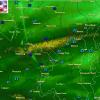
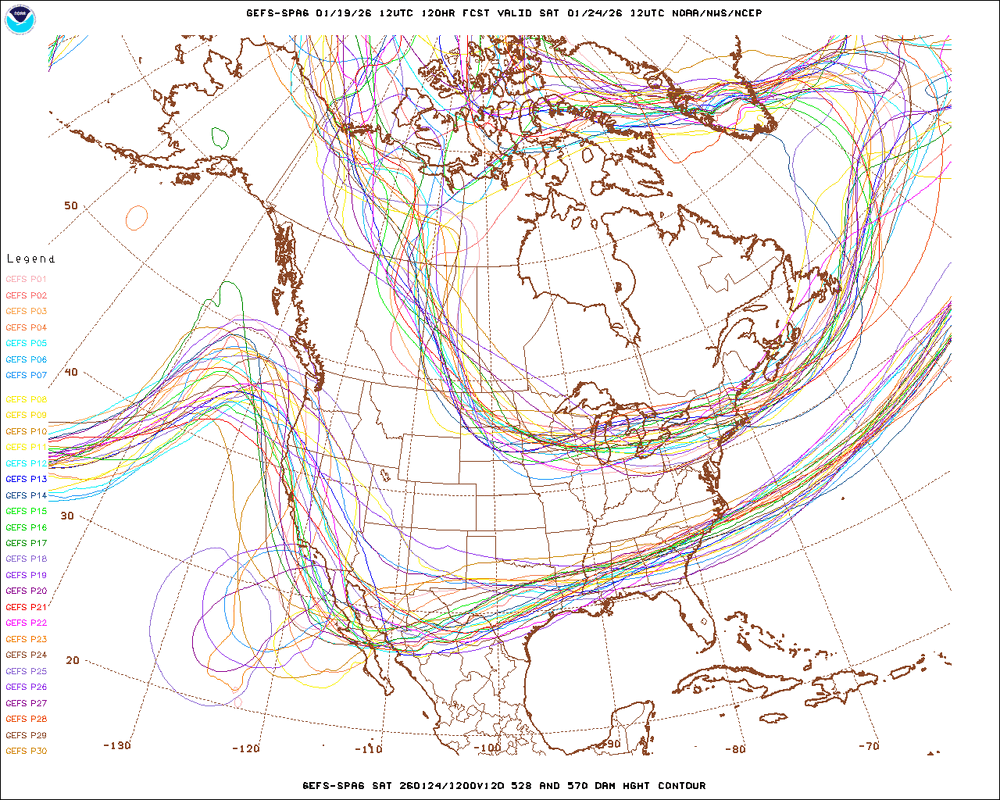
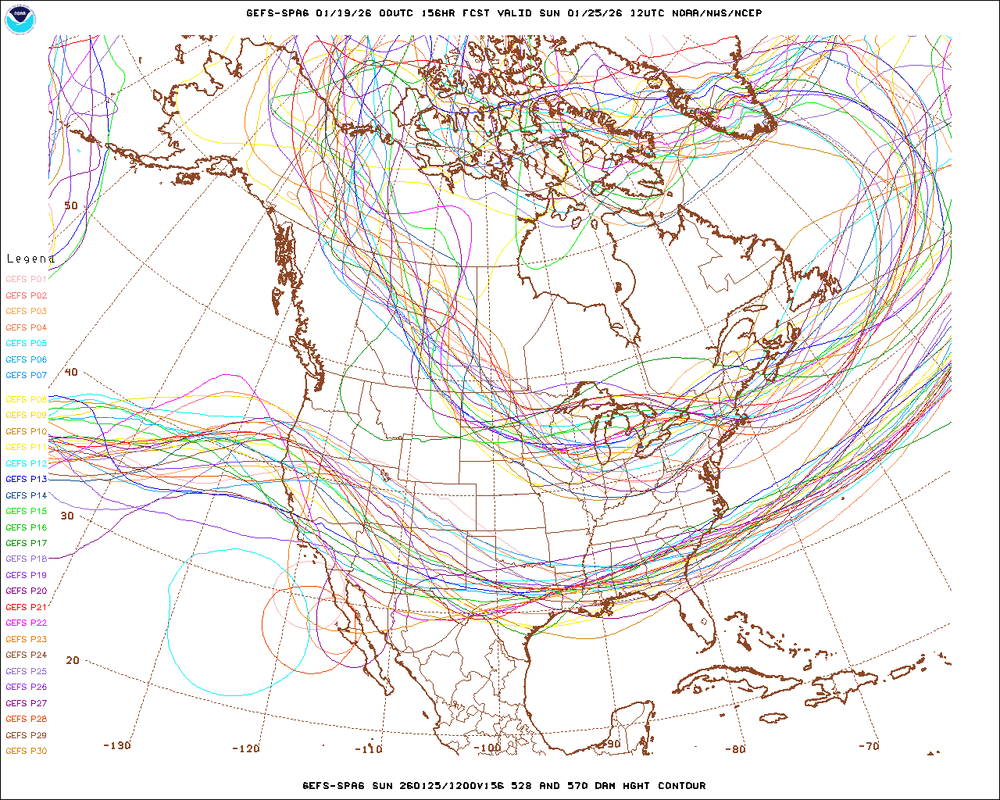
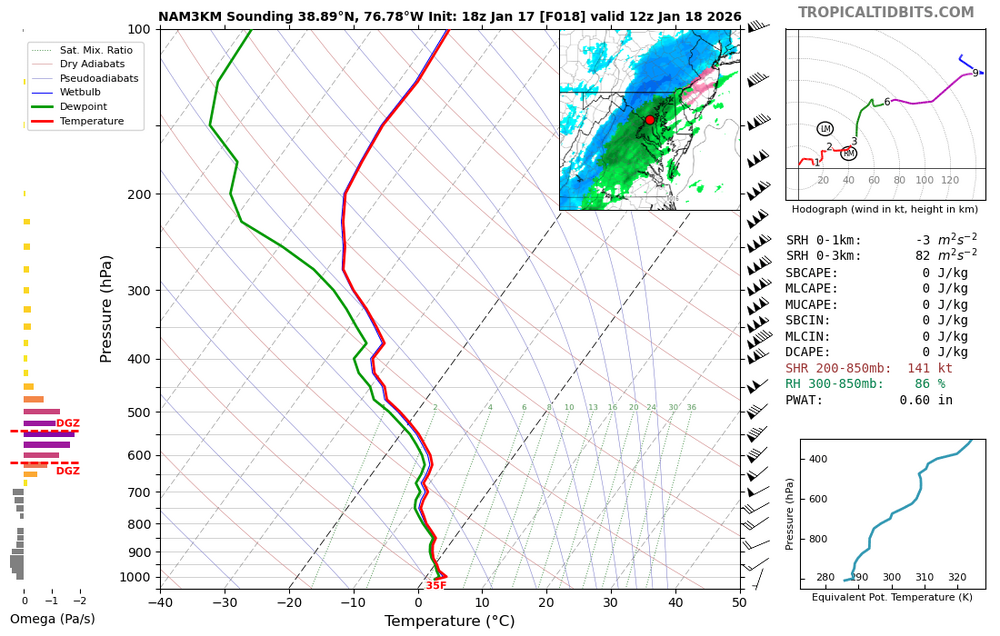
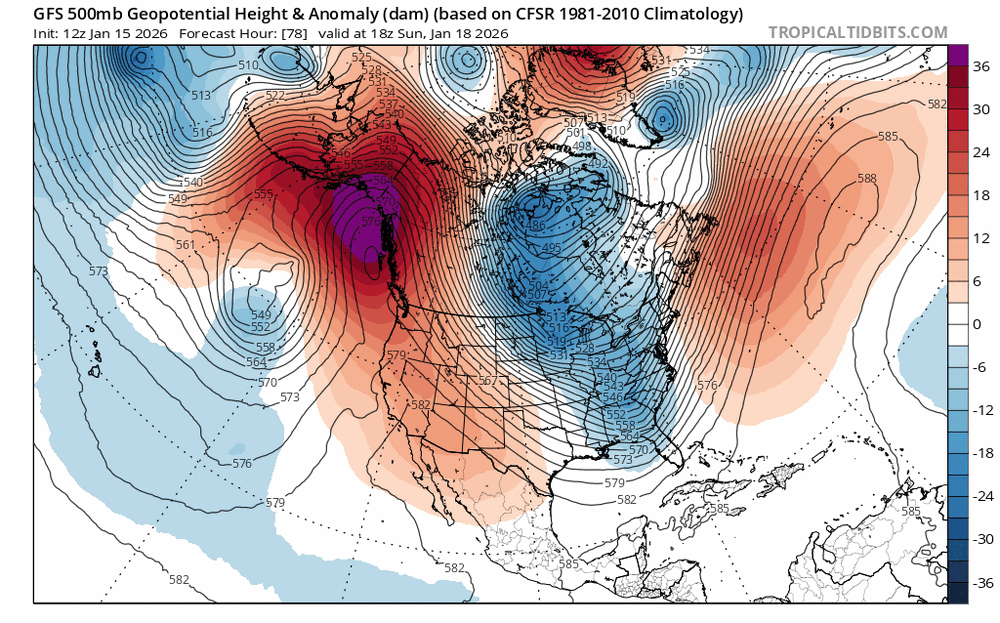
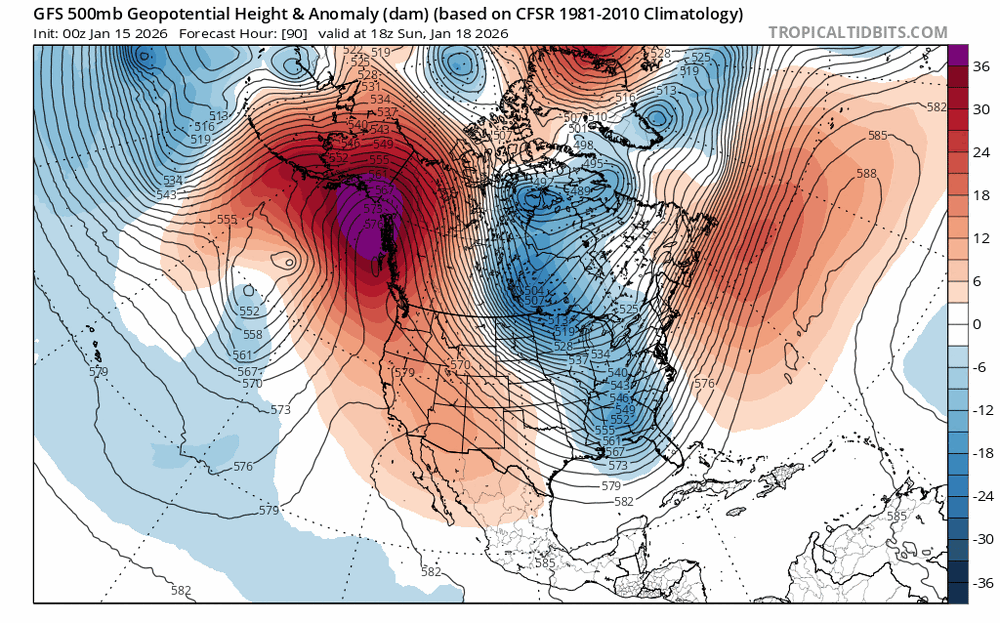
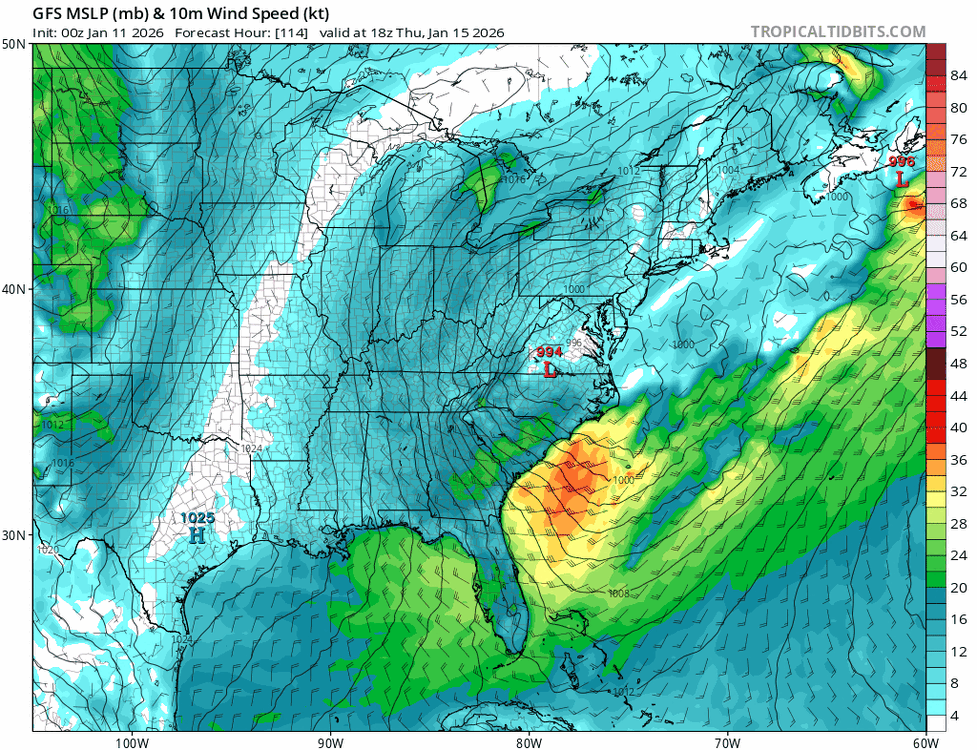
January 24-25: Miracle or Mirage
in Mid Atlantic
Posted
One other thing to note is that the para gives more weight to the CAMs in the short range, so it will be really fun to see what this event looks like as get closer to it happening.